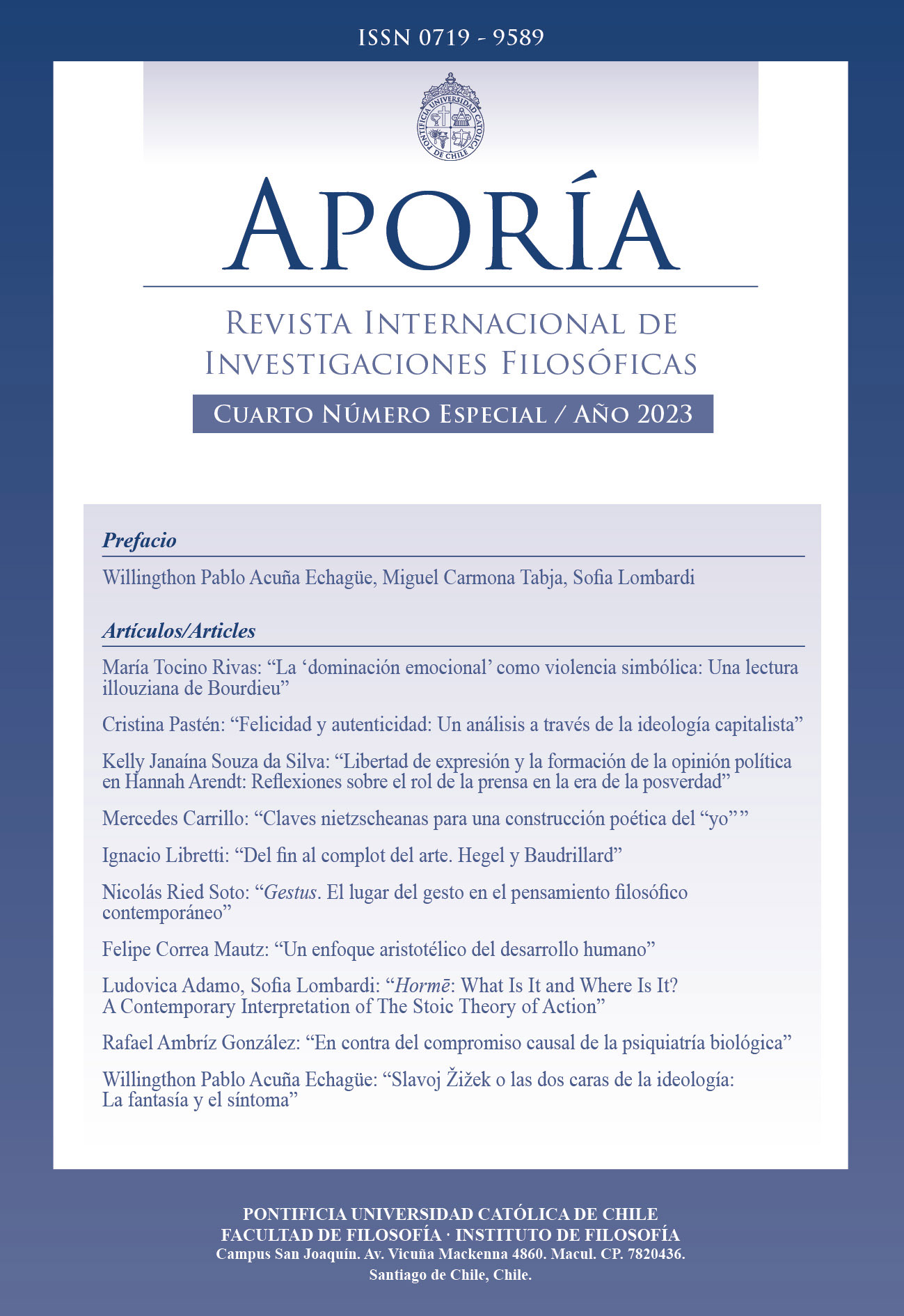HORMĒ: WHAT IS IT AND WHERE IS IT? A CONTEMPORARY INTERPRETATION OF THE STOIC THEORY OF ACTION
Contenido principal del artículo
Resumen
The location of hormē (impulse) is a long-standing problem in Stoic action theory, as it is unclear whether it comes before or after the assent. In this paper, we aim to define hormē and locate it in the chain of mental states that, for the Stoics, bring us to action. Following both ancient and modern sources, we argue that hormē is best understood as an intention since it comprises a cluster of mental states that cause intentional action. We also argue that the impulse coincides with the assent because they are both activated in an agent’s mind almost simultaneously after an external presentation. We, then, reject the notion of double impulse and an understanding of hormē as a desire. The paper highlights interesting points of connection between the ancient and contemporary action theory by showing that the Stoic view of rational, intentional action bears strong similarities to contemporary accounts of intention.
Descargas
Detalles del artículo

Esta obra está bajo una licencia internacional Creative Commons Atribución-NoComercial-SinDerivadas 4.0.

